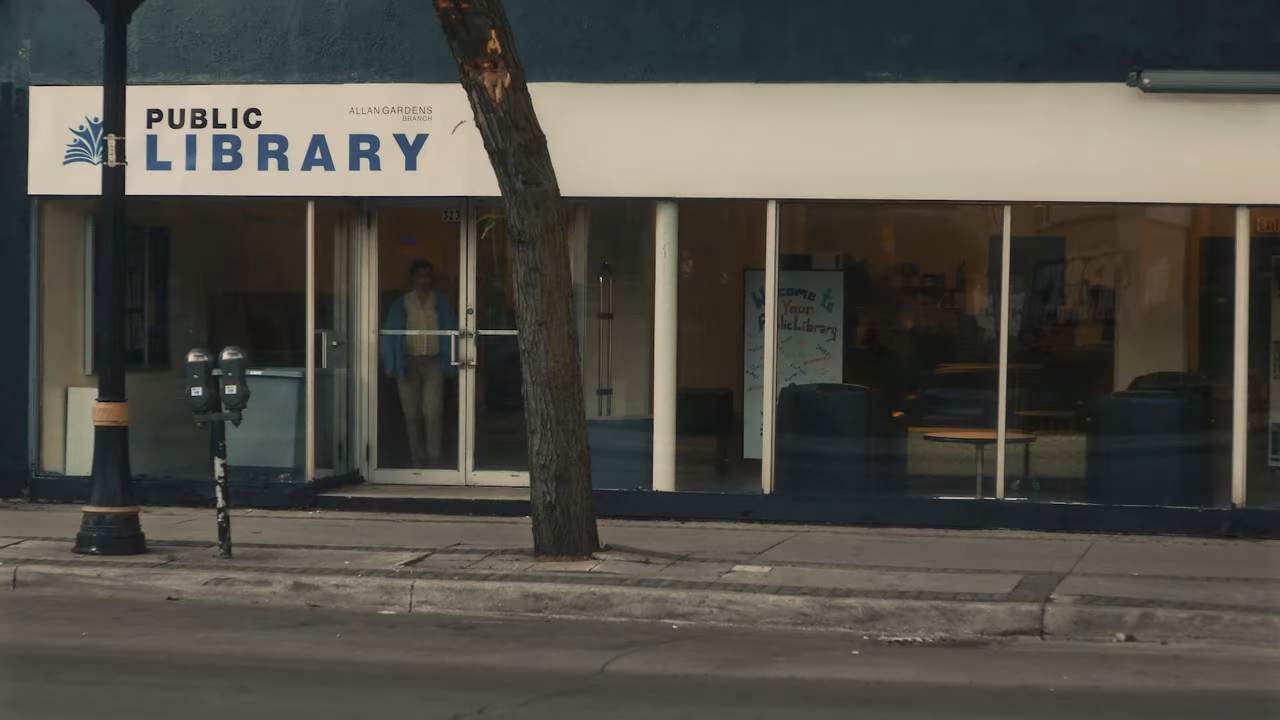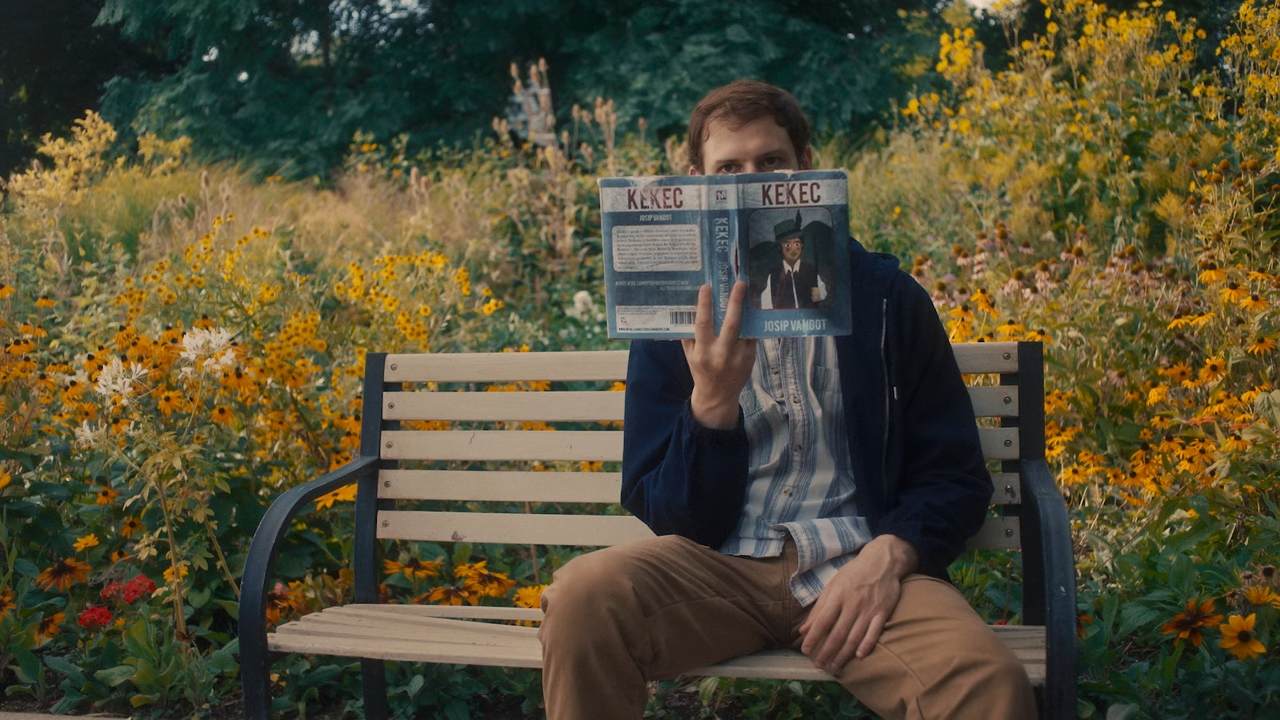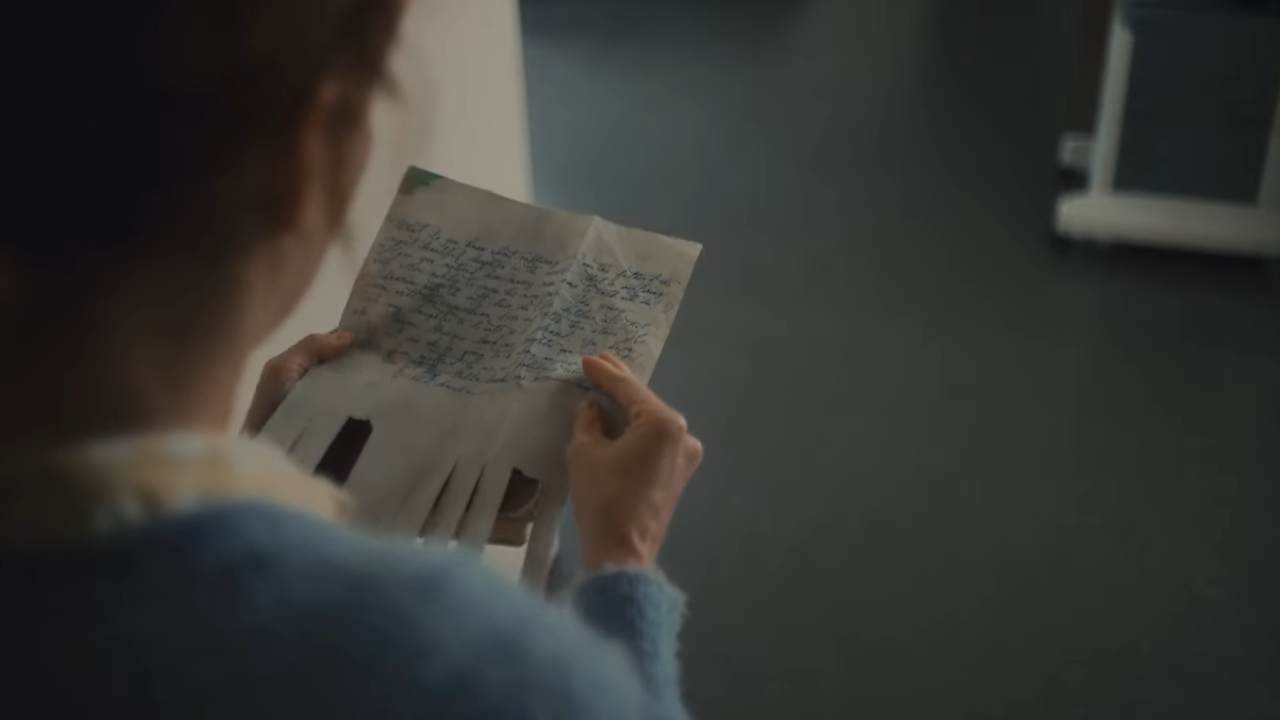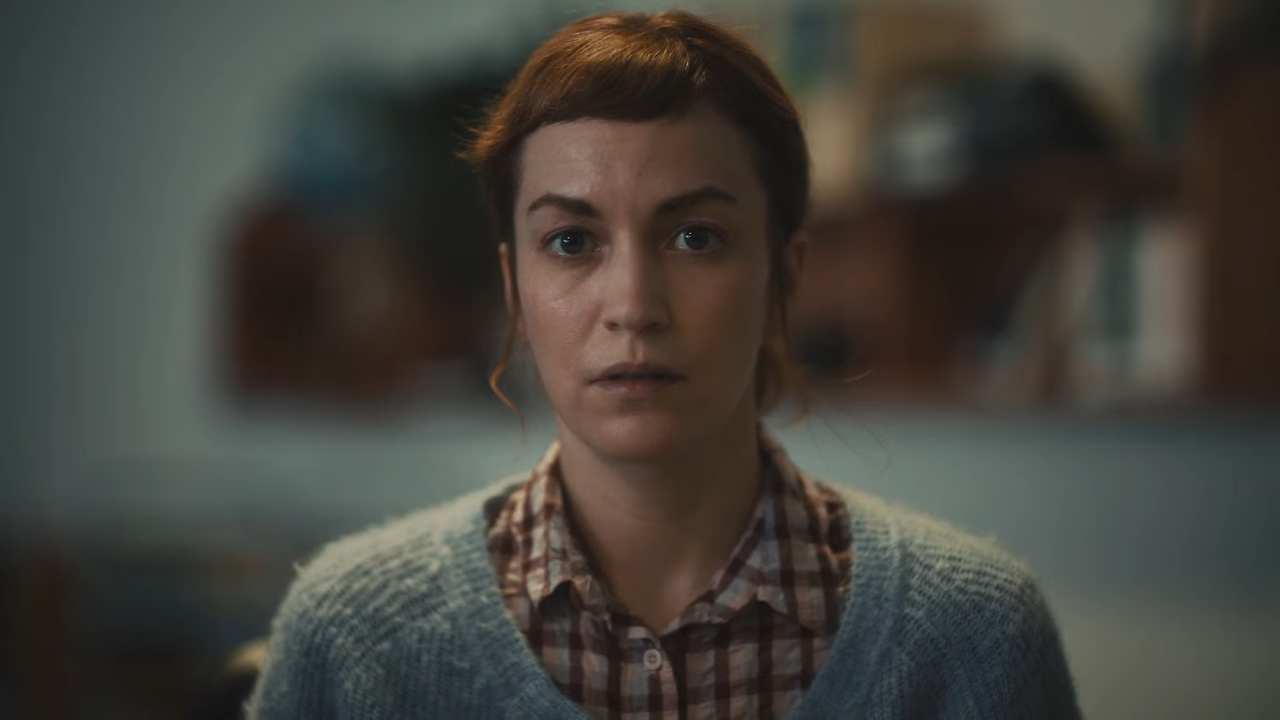In Naomi Jaye’s haunting drama DARKEST MIRIAM, based on The Incident Report by Martha Baillie, the quiet life of a Toronto librarian unravels through mysterious letters, unsettling memories, and a love story that ends in tragedy. It begins like a slow-moving fog—calm, even dull at times—but the deeper we go, the more we sense something isn’t right in Miriam’s world. Beneath her quiet routines lies an emotional storm, waiting to be stirred. When it does, it doesn’t erupt—it creeps, clutches, and finally, consumes.
Let’s break down how the film sets up its eerie, psychological tone, what happens through the story, and what the ending really means for Miriam Gordon—played masterfully by Britt Lower.
MIRIAM’S WORLD: LIBRARY INCIDENTS, LETTERS & A LIFE OF REPETITION

It might not seem interesting to work at a public library, but Miriam meets a lot of interesting people every day. She writes up “incident reports” about strange things that happen in the library, like semen stuck between book pages, forgotten dentures, and patrons acting out for no reason. Most of the time, nothing is done after reading these reports, even though they are very detailed. Due to her grief over her father’s death—Miriam goes about her work with a dull sadness.
Her world is routine: storytime for children—assisting visitors, lunch on the same bench at the park. She observes regulars at the library—Tom, the retired pianist; John B. (Peter Millard), an elderly man with dementia; and a pale, irritable woman who always stirs conflict. Life continues in this odd, quiet monotony until Miriam finds a letter.
Tucked inside a book on Italian opera, the note pretends to be written by “Rigoletto”—the hunchbacked jester from Verdi’s opera.It has a creepy warning that points to obsession and maybe even danger. It is mysterious, poetic, and unsettling. There are more letters, and each one is more personal and intense than the last. Someone calls her “daughter of the freckled hands.” The tone gets worse. It’s clear that Miriam wants Janko Priajtelj (Tom Mercier), the man she’s slowly falling for and she might even be jealous of him.
THE LOVE STORY: JANKO AND MIRIAM’S CONNECTION

Every day at lunch, Miriam sits on her usual park bench. Across from her is a man—quiet, pale, shy. Their connection starts with a simple apple raise, a wordless hello. Eventually, they talk. The man is Janko, played by Tom Mercier—a Slovenian immigrant, taxi driver, and abstract painter with a background in fresco restoration. Miriam and Janko are both awkward, introspective, and isolated. Naturally, they connect.
Their first conversation is about books—Miriam is carrying the opera book with the mysterious letter; Janko is reading Kekec, a Slovenian children’s story. Their chemistry is strong right away, but not overpowering. They start to hang out together. Janko shows Miriam his dark, layered, and disorganized art when she goes to his apartment. Their closeness grows in a deep and unexpected way. Miriam doesn’t say much, but it’s clear that she’s feeling vulnerable. She leaves his place and lies quietly in a construction hole. It looks like she is sinking back into herself, but she has changed.
Janko calls her the “Darkest Miriam”—not as an insult, but as recognition. Her darkness isn’t evil—it’s grief, isolation, the complex shadow of her past. For Janko, who paints in blacks and greys, Miriam’s emotional depth is beautiful. Still, he wants to know more. He wants to understand her history, but she always sidesteps, never quite ready to bare the pain beneath.
THE THREAT BUILDS: WHO IS SENDING THE LETTERS?

As Miriam and Janko grow closer, the letters become more menacing. One directly threatens Janko, warning that blood will be spilled. Another speaks in poetic warnings, calling Janko a “vile scoundrel” and mocking their intimacy. There’s something theatrical, even operatic, about the language, echoing the drama of Verdi’s Rigoletto—which isn’t a coincidence.
We learn that Miriam’s father was the one who introduced her to opera. He was obsessed with books—so much so that he packed their garage with them, leaving Miriam’s car out in the cold. He believed those books would someday be worth something, only to give them away later. He was erratic, obsessive, and emotionally distant. Is it possible he’s the source of the letters? Or is it someone else who knows Miriam’s inner life?
Miriam herself begins to spiral. When Janko misses a day at the park, she panics, fearing she’s been abandoned again. But he returns, promising that she will always “find herself standing in tall grass”—a metaphor for being found, rooted, seen. Their bond grows stronger. They cook, walk, and share quiet, precious time. It feels like hope—until it’s violently ripped away.
THE TURNING POINT: JANKO’S DEATH

One night, there’s a knock on Janko’s apartment door. A police officer Spears (Jamaal Grant) tells Miriam that Janko has been killed in a robbery gone wrong. Just like that, he’s gone. No long goodbye, no confrontation. He disappears, just like her father did—leaving behind grief that’s overwhelming and unresolved.
This tragedy is a sharp turn in the film. Miriam, who finally opened up, who allowed herself to love, is now left alone with unanswered questions. And the letters? Still no identity. Still no closure.
ENDING EXPLAINED: WHO WAS RIGOLETTO, AND WHAT DOES IT MEAN FOR MIRIAM?
So who wrote the letters? DARKEST MIRIAM never reveals the identity of the mysterious Rigoletto. The handwriting points to someone with an intense personal attachment to Miriam. The content—filled with jealousy, operatic drama, and paternal tone—feels like the voice of someone who wants to protect her but also control her.
Some clues suggest the writer might be a woman—based on the language used. Others point toward the memory of Miriam’s father, whose obsession with opera and books left a psychological imprint. The letters feel like an extension of her past—a haunting echo of unresolved emotions. Whether the author is real or imagined, their presence pushes Miriam toward reflection, grief, and finally, transformation.
In Rigoletto, the opera ends with the jester discovering his daughter’s dead body—devastated by the very trap he set. In DARKEST MIRIAM, it’s the daughter left alive, mourning her lover and haunted by the emotional ruins her father left behind. The tragedy is inherited but not repeated.
We last see Miriam living in silence once more. She cuts sourdough. She answers the police. Eventually, she leaves her job at the library. She moves on—not out of denial, but through hard-earned growth. She’s changed. She’s still grieving. Her final inner voice whispers, “Weep, child, weep”—a quiet farewell to innocence and to the parts of herself that died with Janko.
MIRIAM’S TRANSFORMATION
The brilliance of DARKEST MIRIAM lies not in the answers it gives but in the emotional questions it raises. Who sent the letters is less important than what they did to Miriam. They forced her to confront pain, to risk love, to open her carefully guarded heart. In losing Janko, she finds something—maybe not peace, but understanding.
Miriam may never know who “Rigoletto” is. But through love, grief, and letters that walk the line between threat and affection, she becomes someone new—someone less afraid of the tall grass.
For more updates, insights, and deep dives into Darkest Miriam and other thought-provoking films, keep visiting tvacute.com for fresh perspectives, episode recaps, and exclusive previews.







